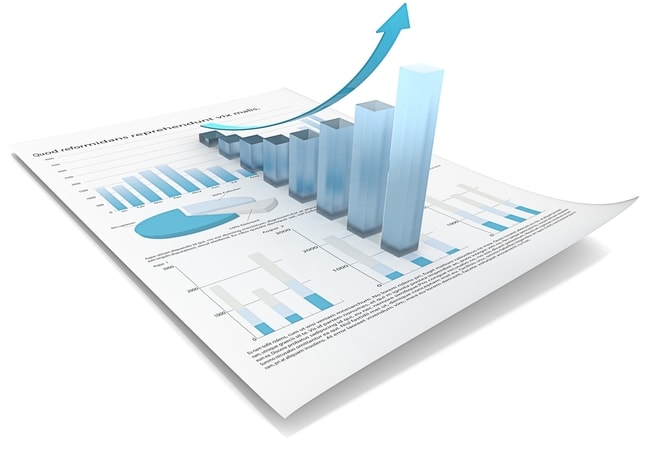Factors to Consider When Using MLA Writing Style
The Modern Language Association (MLA) was developed to help scholars and researchers in the fields of literature and languages to have uniformity when formatting their writings. The consistency and uniformity enhance the readability of papers and assignments in language, literature, and other sectors where the MLA writing style has been adopted. This article provides information on the factors that one should consider when using the MLA writing style.
Advantages of Using the MLA Writing Style
The benefits of using MLA style in writing include the following:
- In academic writing, MLA enhances consistency in the use of English language.
- This style improves clarity in presentation and formatting information, thereby making the course of reading through easier.
- It preserves intellectual honesty through acknowledgement of other peoples’ ideas and correctly attributing information to the original source.

General MLA Guidelines for In-text Citation
The MLA writing style gives the following guidelines for in-text citations:
- When writing a source within the text, it should be placed before a comma, semicolon, a full stop, or generally in a sentence’s breaks.
- The name of the source’s author together with the page number from which the cited information was taken should be enclosed in brackets. A semicolon should be used to separate multiple sources in one reference entry.
- Page numbers that have not been mentioned along the sources can be omitted from the list of references.
- The names for corporate authors should be cited in the paper. Under circumstances where the name is too long, it may be included in the sentence rather than enclosing it in brackets.
- When the names of the cited works are very long, italics should be used in writing and emphasizing them where necessary.
Major Elements of MLA Writing Style
The following are some of the factors that one should put into consideration when writing papers in MLA style.
1. The Header
The MLA format dictates that, on the first page of the document, a left-aligned header should be written. This header comprises of details such as the student/scholar(s) full name, name of the supervisor or instructor, name and number of the course, and the due date of the assignment/project. All the elements must be written on separate lines that are double-spaced.
2. General Paper Formatting Using MLA Guidelines
There are various aspects to consider when formatting works in MLA style. These include:
Margins
The recommended margin according to this style is one-inch throughout the paper.
Indenting Paragraphs
The first word in every paragraph should be half-inch intended from the left margin.
Line-spacing
Double-spacing is recommended for all the lines in the entire paper or essay written in MLA writing style. This applies to the main text, the heading, the reference section, and all other components of an MLA styled paper.
Font Type and Size
Any easily readable font is acceptable in MLA writings with the most commonly used types being the Times New Roman and Arial. The 12-point font side is commended because it is the default size in most word processing programs. However, other standard readable sizes are also acceptable.
3. Title Page
An MLA title should be typed in title-case capitalization and centered in the paper, below the due date. A full stop should not be placed after the title or any other heading. One should not be underlined, italicized, or enclosed in quotation marks. Quotations and italics should only be used if the title of another source is included in the paper title.
4. Running Head and Page Numbers
Every page in a project contains a brief heading placed at the top right corner. It is a recommendation by the MLA that the running head comprises of the author’s last name and the page number. A single space should be used to separate the name and the page number.
5. Use of Quotations
Arguments and points are put under quotation to defend or prove them, to emphasize, or enhance the project’s sparkle. In-text citations are used in the body of the project or essay to credit the originator of the quoted words or phrases. One should be careful not to include too many quotations within their writing.
6. Use of Paraphrases
Summarizing and customizing another source’s text or speech in one’s project or assignment using own writing style amounts to paraphrasing. However, even after modifying the information sourced from outside, it is still necessary to acknowledge the original source to avoid plagiarism and maintain intellectual integrity.
7. Using Abbreviations in MLA Writing Style
Many types of sources such as blogs and websites allow use of abbreviation. However, the MLA style discourages using abbreviations in scholarly writings. Spelling the full words is highly recommended to enhance comprehensibility to the reader. Below are the various elements that can be abbreviated in the accepted sources:
- Abbreviating Months
When used in within the text of the paper, one should write out the name of the month in full. However, when citing references, the MLA recommends abbreviations of months that are longer than four letters.
- Abbreviation of Publishers
In the reference section, names of publishers are structured such that some words are abbreviated, others are omitted, yet others are spelled out in full.

8. Formatting Numbers in MLA Style
The MLA writing style gives recommendations on whether to use Roman numerals, Arabic, or spell out numbers.
- Use of numerals
Numerals preceding measurements are recommended when one is conducting statistical or scientific research.
- Arabic Numerals
Numbers that can be written on one or two words should be spelt out in the text. If the content of the paper includes fractions, decimals, and longer numbers, they should be written using digits. MLA discourages starting a sentence with numeral values. Instead one should modify the sentence such that the numerals appear elsewhere within the sentence, or consider typing out the written number.
9. Using Figures, Tables, and other Illustrations in MLA
Representing information in tables, graphs, and other relevant visual illustrations promotes understanding of the paper. Only those visuals that enhances the quality and comprehensibility of the writing should be included. When using illustrations or tables in MLA writing, they should be placed as close as possible to the information that they represent.
- Formatting Tables in MLA
When using tables to represent information in MLA writing, one has to number, label, and give them a descriptive title. On separate lines, the title and label are inserted above the table in bold. If the table is out-sourced, it is a must to have a descriptive caption with the information on the source below the table. Any descriptive notes should be placed below the table with superscripts marking them on the relevant parts of the table. For the title of the table, one should remember to use title case capitalization as well as double spacing as in the rest of the paper.
- Formatting Figures in MLA
If figures and any other visual aids that are not tables are also included in the text, their numbers and labels are integrated into a caption which is centered below the figure or image. The figure is abbreviated to “Fig.” followed by the number and a full stop.
10. Using Lists in MLA
Lists are allowed when using MLA writing style but the given guidelines on adding lists in MLA papers must be strictly adhered to. Items are listed in continuous prose rather than the traditional vertical style. The introductory sentence and the list are separated by a colon.
11. MLA Format for Works Cited
This represents a list of all the references consulted for information used in writing the text, usually comes after the appendices section. All the ideas borrowed from an outside source must be acknowledged and cited accordingly. The list should be alphabetically organized and subsequent lines in the entry should have a hanging indent. The section of references is the last in the paper and should bear the running head and page number on the top. Double-spacing is recommended for the entire page. The elements of the reference list in MLA writing style should appear as follow: Author. Title of the source. Title of the container, Other contributors, Version, Number, Publisher, Publication date, Location. This is the recommended order in which these elements should be arranged in the list of references.
- The Author
The author can be an individual, a corporation, or a group responsible for writing the cited source. It should be the first element in the entry, followed by a period.
- Title of the Source
The format of the title depends on the type of source being used. Important words in the title should be capitalized. At the end of the title there should be a period.
- The Container
The names of the container(s) should be italicized with a comma inserted at the end.
- Contributors
Other contributors who are not the primary authors of the source may also be include in the citation entry, such as editor, directors, or translators. For references with three or more contributors, only the first contributor is included in the list, followed by the abbreviation “et al.” A comma is placed at the end of the contributors’ element.
- The Version
To help the reader in identifying the source easily, one should include the version or the edition being used. The version component should end with a comma.
- Number
For the sources that are numbered, it is important to list them alongside their respective numbers so that the reader can retrieve them with ease. The numbering element consists of features such as volume/issue for a journal, volume number for books, or episode number for a television episode. A comma is placed at the end of the number.
- The Publisher
The publisher is included in most citations to represent the organization that produced the source being cited. The publisher element also ends in a comma.
- Publication Date
The date should be listed starting with the day, month, and year in that order. All months whose names are more than four letters long are abbreviated. A comma is placed at the end of the date component.
- The Location
The location is the last component of a reference list entry according to the MLA writing style. This element varies based on the type of source being cited. For reference materials physically seen or experienced in person have physical locations. On the other hand, if the source being cited is an online material or a scholarly article, a URL or a DOI should be used respectively. Print sources are located by page numbers. At the end of this element is a period.
12. Editing and Proofreading
The research or writing process is rarely complete without having the document targeted for thorough editing and proofreading. The following are the items to be checked before submitting the assignment or project:
- Correct Spelling of Words Throughout the Text; Before submitting the paper, it is necessary to review all the aspects of writing. One should check whether all the proper names, places, and any other unique words or phrases are spelled correctly. It is not proper to entirely rely on online spell checkers because they may not detect every error. Scrutinizing the document for errors is therefore highly recommended, or hiring a professional editor to edit the paper in MLA style and correct any available spelling mistakes.
- Grammar and Usage. Proper usage of words must be ensured before submission. The assignment or project paper must be examined and possible mistakes within the text corrected. There are online applications and programs to check grammar. However, the suggestions they give must be reviewed before acceptance lets they change the meaning of the information being communicated in the paper if changes are made without proper suitability assessment.
- Proper use of punctuation marks. All periods, commas, hyphens, and any other punctuation marks used within the text must be placed in the appropriate positions.
- The Attribution. It is important to check whether an in-text citation was created for every bit of information including quotes and paraphrases that were obtained from elsewhere.

Having discussed the basic factors to consider when using MLA writing style, it becomes easier for students, researchers, and scholars in the language and literature fields, as well as any other field that adopts this style to write quality papers. The consistency and uniformity recommended in the MLA style make it easier for the reader to read and understand the content.
Most of the times students decide to look for MLA style writing help from professional MLA style writers. Those that cannot write a custom MLA style paper on their own have the choice of consulting experts for the best MLA paper writing service, which can be accessed online or physically from MLA style writing experts. They present instructions as clients to these experts and sit back to wait for the best quality term papers, assignments, projects, and all sorts of MLA papers.
Before deciding to hire a person to format in MLA writing style or to buy the MLA writing services, it is important to be familiar with the content of the paper and the requirements of the MLA style so that after formatting by the professional MLA style writers, one is in a position to assess the quality before submitting the document. It is the responsibility of every student or scholar to ensure that their work aligns to the style requirements and the supervisor’s directions and recommendations. Editing and proofreading must be considered for the best results.





